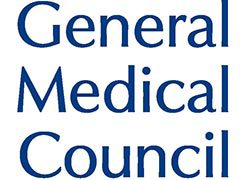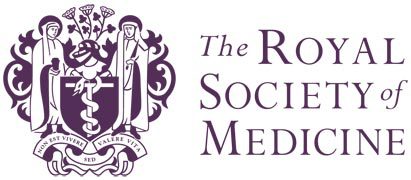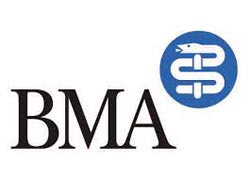Fue
A hair transplant is a procedure where healthy hair follicles are transplanted to the area affected by alopecia.
Follicular Unit Extraction (FUE) involves removing individual healthy hair follicles directly from a donor area one-by-one and then transplanted to the affected area. This procedure is based on the use of surgical microscopes to extract hair follicles “one-by-one” from any donor area. In fact, FUE allows us to take hairs from the scalp, the sideburns, the beard, the chest and the lower abdominal wall. The procedure can take from two to six hours depending on the size of the area you wish to restore.
Why choose the FUE hair restoration treatment?
With a FUE procedure, it is possible to transfer between 1000-1500 follicular units in a single session. It is necessary to shave the whole side and back of your head in order to carry out the treatment.
This means FUE is the correct procedure to:
-
Cover a limited area of the scalp, such as the crown (top) or the frontal line, or the face – such as the beard and eyebrows in a single session
-
Cover a larger area but only when you are happy to complete the restoration process in more than a single session
-
Treat other types of alopecia, such as triangular alopecia and traction alopecia
- Read More
WHAT CAN FUE ACHIEVE?
FUE is the right procedure for you if one of the following applies:
-
You need an eyebrow transplant, sideburns or beard transplant.
-
You need to cover a scar from previous facial or hair transplant surgery
-
You need a top up following a previous hair transplant surgery.
-
You suffer from immune suppression; connective tissue disease and you are aware of being at high risk of infection or producing bad scars
-
You wish or need to keep your hair shaved at all times (less than 2 cm) for personal, religious or professional reasons
-
You do not have enough donor hair on your scalp and need to take hair from other areas of the body
WHAT ARE THE ALTERNATIVES TO FUE?
Each scalp and pattern of hair loss is different as such, a hair and scalp examination is required beforehand. Other alternatives to FUE include FUT (Follicular Unit Transplantation).
BEFORE YOUR FUE PROCEDURE
Establishing which procedure is likely to be best for your specific needs, feeling confident and comfortable with your surgery journey is a process that requires good communication between you and your surgeon. This starts at your consultation, here you’ll have the opportunity to explain your personal circumstances and pose questions.
DURING YOUR FUE CONSULTATION, YOU WILL:
-
Have the opportunity to explain your reasons for seeking hair transplantation
-
Be given time to ask advice and pose questions to Dr Cotrufo
-
Undergo a health evaluation.
-
Have your hair and scalp condition assessed
-
Discuss the hair loss treatment options that are open to you, including costs and timescales.
-
Talk through potential risks as well as benefits.
-
Learn about the procedure and what will happen before, during and after your FUE procedure.
In the run-up to your FUE surgery and in the days immediately prior, you may be asked to make lifestyle changes or to avoid particular medications and activities.
This may include:
-
Taking a blood test or other medical tests
-
Stopping smoking
-
Adjusting or taking certain medications
-
Avoiding aspirin, herbal supplements and anti-inflammatory drugs
-
Avoiding overexposure to the sun
-
Committing not to make serious dietary changes
If you require a general anaesthetic for the procedure you will be instructed how to fast.
THE FUE PROCEDURE
You will be treated in our Harley Street Surgical Theatre, which is fully equipped with a high-tech suite designed specifically for hair transplant patients. This state-of-the-art theatre is compliant with the Care and Quality Commission (CQC) protocols for safe and accurate monitoring before and during your procedure.
You will be offered the option of taking a mild sedative if you are nervous or find it hard to lie still. The procedure will be performed under local anaesthetic, so you stay wide-awake and the rest of the procedure should be free from discomfort. You can even talk to your surgeon, watch a DVD or listen to music.
THE FUE PROCEDURE IS COMPLETED IN 4 CONSECUTIVE STEPS:
-
Preparing: Hairs will be shaved down to 3-4 millimetres and the whole scalp prepared with antiseptic solution.
-
Local anaesthesia: We will use a cocktail of lidocaine and adrenaline with a “tumescent” technique that will make the procedure pain-free.
-
Extraction: Dr Cotrufo uses the highest microscopic magnification of 6.5x to harvest hair follicles. The extraction is robotic-assisted by using a punch of 0.5 to 0.95 mm in diameter. This corresponds to the size of the natural hair follicles containing up to 4 hairs each. This represents the most advanced technique of hair transplant and allows the harvesting of about 1000 hairs in just 3 hours.
-
Implantation: Dr Cotrufo views each hair transplant as “absolutely unique”. The hair will be implanted wherever required, reproducing the natural direction of that very specific area. Hairs will also be “packed” in different numbers in order to reproduce the perfect density needed to achieve a natural result
AFTER YOUR FUE PROCEDURE
You will be able to go home straight away but we recommend not driving on the day of your procedure. You will have full written medical prescription and instructions on how to take care of your scalp and your ‘new’ hair. This will also include the contact numbers of our clinic and the date for your next follow up appointment.
STILL HAVE QUESTIONS ABOUT FUE?
If you would like to discuss your suitability for surgery or to discuss the FUE procedure in further detail, please call our clinic on 0207 8732330 to organise a personal consultation.
Fut
Losing your hair can be a very difficult process to overcome. With our advanced Follicular Unit Megasession, you can reverse the effects of alopecia in just one session.
Follicular Unit Transplantation (FUT) is a FUT hair transplant technique to redistribute a very large number of healthy hair from the back and sides of the scalp to any thinning areas affected by alopecia. FUT hair transplant is known as the ‘strip method’ because a single strip of hair-bearing skin is taken from the back of the head, where hairs are resistant to androgens.
Why choose the FUT hair restoration treatment?
The main advantage of FUT is the quicker and safer transplant of thousands of grafts in a single Megasession. This allows large areas of the affected scalp to be treated in only a few hours.
With an FUT it is possible to transplant up to 3000 hair follicles in a single session. The procedure is much faster than FUE as 1000 grafts can be transplanted in only 3 hours and with no need to shave your head.
- Read More
WHAT CAN FUT ACHIEVE?
FUT is the right procedure to:
-
Cover a small area of scalp or face while you do not wish to shave all your head
-
Cover a large area in a single session – which corresponds to 2 or 3 sessions of FUE
WHAT IS A MEGASESSION?
A megasession is an FUT Hair Transplant where a very large area of the scalp is covered with very dense paching of 2000 to 3000 follicular grafts within a single session. This corresponds to 5500 to 8000 hairs.
The Megasession treatment gives hair loss patients the chance to permanently cover the bald area of their head. And with Dr Cotrufo, the results are guaranteed: we offer free replacement of any non-growing hair within one year after the original treatment.
BEFORE YOUR FUT PROCEDURE:
Establishing which procedure is likely to be best for your specific needs, feeling confident and comfortable with your surgery journey is a process that requires good communication between you and your surgeon. This starts at your consultation, here you’ll have the opportunity to explain your personal circumstances and pose questions.
DURING YOUR CONSULTATION, YOU WILL:
-
Have the opportunity to explain your reasons for seeking hair transplantation
-
Be given time to ask advice and pose questions to Dr Cotrufo
-
Undergo a health evaluation.
-
Have your hair and scalp condition assessed
-
Discuss the hair loss treatment options that are open to you, including costs and timescales.
-
Talk through potential risks as well as benefits.
-
Learn about the procedure and what will happen before, during and after your FUT procedure.
In the run-up to your FUT surgery and in the days immediately prior, you may be asked to make lifestyle changes or to avoid particular medications and activities.
This may include:
-
Taking a blood test or other medical tests
-
Stopping smoking
-
Adjusting or taking certain medications
-
Avoiding aspirin, herbal supplements and anti-inflammatory drugs
-
Refraining from drinking alcohol
-
Avoiding overexposure to the sun
-
Committing not to make serious dietary changes
THE FUT PROCEDURE:
-
Hair from the back of the scalp is harvested in a single, thin strip. In order to cause the least amount of trauma to the skin on the patient’s head, excess tissues of non-hair bearing skin are first trimmed from around the small follicular units.
-
It is then trimmed into individual follicular units under microscopes, with each unit measuring around 1mm in width.
AFTER YOUR FUT PROCEDURE
You will be able to go home straight away but we recommend not driving on the day of your procedure. You will have full written medical prescription and instructions on how to take care of your scalp and your ‘new’ hair. This will also include the contact numbers of our clinic and the date for your next follow up appointment.
You will be able to see the shape of your new hairline immediately after the FUT transplant has taken place with the follicles implanted in their new position. However, visually it may not be as pleasing as you may have expected as there will be scabbing around each follicle.
STILL HAVE QUESTIONS ABOUT FUT?
If you would like to discuss your suitability for surgery or to discuss the FUT procedure in further detail, please call our clinic on 0207 8732330 to organise a personal consultation.
Scalp Reduction
Scalp reduction is a surgical treatment to remove parts of the scalp that are affected by alopecia, the purpose being to reduce the overall area of bald skin. The healthier parts of the scalp are then stretched and re-positioned, making the balding area smaller and more manageable. The treatment can be done in isolation but is often used in conjunction with a hair transplant procedure.
A small scalp reduction can be performed under local, and sometimes with a mild sedative to help you relax, a strip of skin ranging from two to five centimetres can be removed in one session, with the remaining skin stitched together.
Larger scalp reductions, such in cases of severe burns or traumas are instead performed in general anaesthesia. In these cases, the hair transplant is performed in a second stage. Dr Cotrufo is also a pioneer in using an injection of fat in the scar tissue to prepare the scalp for hair transplant.
- Read More
ABOUT DR STEFANO COTRUFO AND HIS CLINIC
Dr Stefano Cotrufo is a Board Certified Plastic Surgeon with over 15 years’
experience working in London as a plastic surgery and reconstructive microsurgery
specialist. He performs a wide range of plastic surgery and non-surgical
procedures from his private practice in Harley Street.
TRAINING AND FAMILY
Dr Cotrufo was born in Naples, Italy. His medical training and experience in plastic surgery began at the University of Napoli, Italy followed by the University of Messina, Italy, where he graduated top of his class, magna cum laude. Coming from a family of doctors, medicine was a passion from an early age. His father was a professor of Neurology, and his uncle is a renowned heart surgeon, and was the first to perform a heart transplant in Southern Italy.
His passion for plastic surgery, coupled with hard work has enabled his research in aesthetic and reconstructive surgery to be published in peer-reviewed journals, as he continues to contribute research and speak at industry events about many of his specialist fields, including reconstructive and aesthetic breast surgery.
He lives in central London with his wife and son.
His dedication has earned him training and experience in some of the most prestigious surgical departments across the world, including
Canniesburn Plastic Surgery Unit (Glasgow)
Head and Neck Unit of University College Hospital (London)
Plastic Surgery Unit of the Royal Marsden (London)
Royal Free Hospital
Royal London Guys and St Thomas
Royal Infirmary Aberdeen
Hospital Santa Isabel de Clinics of Taubate in San Paulo, Brazil, the world’s pioneering country for plastic surgery.
MULTI BOARD CERTIFIED:
-
General Medical Council (GMC) registered (Specialist Register)
-
Member of British Association of Head and Neck Oncology (BAHNO)
-
EBOPRAS accredited (European Board)
-
Member of the Royal Society of Medicine (Fellow)
-
Society of Plastic and Reconstructive Surgery (SICPRE).
Hair Line Lowering
If you have an excessively high hairline, this can mean that you have a larger than average forehead as a result.
For many people, this can lead to insecurity and a lack of self-confidence – however, a beautiful, natural-looking hairline can be achieved thanks to Scalp Advancement Surgery. Sometimes called hairline lowering or forehead reduction surgery, this procedure can create a more even, balanced hairline that is in proportion with your facial features. Not only does this result in a more youthful appearance, but it can also create a more refined look overall that will instantly boost your self-confidence.
Why have Scalp Advancement Surgery?
A high hairline or large forehead may well make you feel self-conscious, so much so that you may purposely choose or avoid certain hairstyles or clip-ins to cover it up.
Scalp advancement surgery can permanently rid you of this self-doubt and make you feel more confident and outgoing than ever, as your hairline will be repositioned to be in proportion with your face. If you have always been insecure about your large forehead, this treatment is absolutely ideal. It provides results that are very noticeable and yet totally natural-looking, helping you feel absolutely amazing when you look in the mirror.
- Read More
WHAT HAPPENS DURING A HAIR LINE LOWERING PROCEDURE?
During the hairline lowering process, the hair follicles are repositioned so that hair grows lower down on the forehead. This decreases the size of the forehead, and your surgeon will ensure that the new hairline mimics that of the old so that it heals naturally with no visible scarring left behind.
BENEFITS AND RESULTS
For many people, undergoing a hairline lowering procedure is a big step, and the results are nothing short of life changing.
This rejuvenating procedure can take years off your face, and can help you look and feel your most comfortable. Your hairline and indeed the overall look of your face will be dramatically altered to give you the look you have always dreamt of. If your high forehead has always been a source of self-doubt, you can finally put those insecurities to rest and feel fantastic about your new well-proportioned face. You may start to experiment with new hairstyles or try out new make-up as you can feel positive about your facial features, rather than timid. And unlike hairstyles, hats or extensions, this plastic surgery procedure provides permanent results, so you can finally feel 100% confident about facing the world – quite literally!
BEFORE YOUR PROCEDURE
A relaxed and comfortable surgery experience starts with good communication between you and your surgeon. During your consultation, you will be able to meet with Dr Cotrufo, discuss your situation and ask him questions.
DURING YOUR CONSULTATION, YOU WILL:
-
Have the opportunity to explain your reasons for seeking hair line lowering surgery
-
Be given the opportunity to pose questions to Dr Cotrufo
-
Undergo a health evaluation
-
Have a full assessment of your brow and forehead area
-
Discuss the options that best suit your needs
-
Discuss the risks and benefits in addition to costs and timescales
In the weeks leading up to your procedure and the days immediately prior, you may be asked to make some small changes to your lifestyle or to avoid particular medications or activities.
This may include:
-
Taking a blood test or other medical tests
-
Stopping smoking
-
Adjusting or taking certain medications
-
Avoiding aspirin, herbal supplements and anti-inflammatory drugs
-
Refraining from drinking alcohol
-
Avoiding overexposure to the sun, especially to the head and face
-
Committing not to make stringent changes to your diet
Those undergoing general anaesthetic will be given fasting instructions to follow.
AFTER YOUR SURGERY
Upon discharge, we recommend a friend or relative drive you home and care for you should you need assistance during your recovery.
After that:
-
You will need to keep your head elevated for a few days after surgery
-
Bandages can usually be removed 1-5 days after the procedure
-
You will be able to shower in warm water the second day after surgery
-
Start walking as soon as possible
-
Stitches and clips can generally be removed 7-14 days after surgery
-
Swelling and bruising will start to subside after 7-14 days
-
Strenuous activity should be avoided for 1 month
-
As your scars heal, they may appear to worsen for the first few months before lightening and flattening
-
Do not use a hairdryer, colour or pull or wrap your hair for several months
-
Avoid steam baths, saunas and sunbathing for several months
-
Camouflage makeup can mask bruising should you need it
-
You will need to attend scheduled aftercare appointments with Dr Cortufo, who will monitor your progress
STILL HAVE HAIR LINE LOWERING SURGERY QUESTIONS YOU’D LIKE ANSWERED?
Expert in plastic surgery and reconstructive microsurgery, Dr Cotrufo, specialises in carrying out facial procedures such as hair line lowering. If you have any further questions about the procedure, your suitability for surgery or the aftercare you can expect to receive should you choose to undergo a brow or forehead lift at his clinic, please call 0207 873 2330 to organise a personal consultation.
© 2023 Dr Stefano Cotrufo | All rights reserved
© 2023 Dr Stefano Cotrufo | All rights reserved







